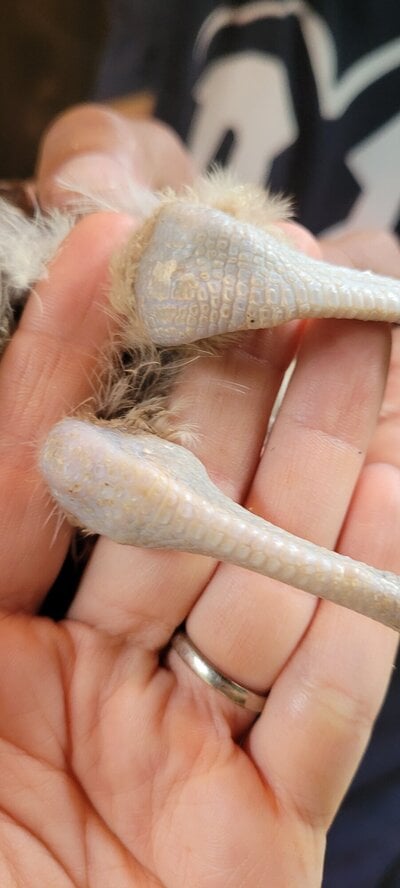FarmGirlErin
In the Brooder
- Sep 1, 2022
- 5
- 16
- 26
My 1.5 month old peachick has injured its leg, possibly dislocated at the knee (see pictures). I noticed it limping one morning and I'm not sure how it happened. I soaked its leg/knee in epsom salt and warm water (hopefully to help with inflammation). Called the vet but none in my area will se exotic birds and a couple of vets that I talked to said there's likely nothing they could do anyway. It's only 2 peachicks being kept together and they seem to get along peacefully so I don't think it was aggression-related. Any ideas or recommendations for treatment? Is she just stuck this way forever now?




